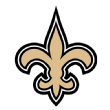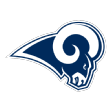Five teams on the rise in 2015
Twelve teams in the NFL make the playoffs every season, and we know that about half of them won't return the following year. The trick is guessing who'll be in and who'll be out. But don't worry, Football Outsiders has a complicated projection system to figure out the answer -- or, at least, what the probabilities are. Because given how much random chance is involved in an NFL season, every team goes into the year with at least a 1-in-400 shot at winning the Super Bowl.
Below, I'll look at the five teams with the best chance to improve compared to last year, according to our forecast. The projection system predicts each team's DVOA (defense-adjusted value over average, explained here) on offense, defense and special teams using a number of variables, including performance over the past three years, coaching experience and personnel changes. Then we simulate the season a million times to get a wide range of possibilities that account for every team's best-case and worst-case scenario.
Click here for a look at five teams likely to decline in 2015.
(Note: We overhauled our projection systems this summer, so the forecasts below might be different from what you've seen from us earlier this offseason.)

Atlanta Falcons (6-10 in 2014)
Mean wins: 8.9 | Playoff odds: 49.2% (sixth) | Wins Super Bowl: 3.0% (14th)
It has been a tough couple of seasons for the Falcons. After five straight winning seasons, the Dirty Birds have gone just 10-22 over the past couple of years. But with new head coach Dan Quinn comes new hope for a playoff push in Atlanta.
The most likely improvement for the Falcons is going to come where Quinn is an expert: defense. Last year, Atlanta had the worst defense in the NFL, according to Football Outsiders' metrics. The Falcons could expect change even without a new head coach, simply because defense tends to regress toward the mean more than offense. The teams that finished dead last in defensive DVOA between 2003 and 2014 improved to an average rank of 20th the following season. But it also helps that Quinn has a strong coaching record and that the Falcons used the eighth overall pick on the pass-rusher we projected to be at the top of this class, Vic Beasley.
But the biggest reason to believe in the Falcons has nothing to do with the Falcons themselves. Atlanta has the easiest projected schedule in the league based on our metrics. We just produced our 11th annual Football Outsiders Almanac (buy here!), and only once in our previous 10 books did the team listed with the easiest projected schedule not go at least 9-7 (the 2007 San Francisco 49ers).
Projected Easiest Schedule, According to FO
Year Team W-L Year 1 W-L Year 2
2015 Atlanta 6-10 --
2014 Houston 2-14 9-7
2013 Indianapolis 11-5 11-5
2012 Chicago 8-8 10-6
2011 San Francisco 6-10 13-3
2010 Kansas City 4-12 10-6
2009 New England 11-5 10-6
2008 New England 16-0 11-5
2007 San Francisco 7-9 5-11
2006 Chicago 11-5 13-3
2005 Chicago 5-11 11-5
A big reason Atlanta's schedule looks so easy: the AFC South. Life always gets easier for teams that draw that division in the NFL schedule rotation. Last year, five teams that played the AFC South won at least 10 games. The year before, it was another five. It was four teams in both 2011 and 2012. The Falcons also have a secret bonus: one more home game than a year ago, when they hosted the Lions in London (and lost).

New Orleans Saints (7-9 in 2014)
Mean wins: 8.7 | Playoff odds: 45.3% (10th) | Wins Super Bowl: 2.9% (15th)
The recipe for a New Orleans rebound is the same as Atlanta's. The Saints also will have an easy schedule, projected 31st, and a defense likely to regress toward the mean after ranking 31st in 2014, ahead of only Atlanta. Our forecast for New Orleans, however, is not as strong as it is for Atlanta because of the personnel losses the Saints suffered this offseason. Based on Football Outsiders' DYAR metric, no team lost more skill-position talent on offense. On top of that, the defense lost its top tackler, Curtis Lofton, and cut its top pass-rusher, Junior Galette.
Because it can be difficult to determine the impact of so much personnel change on both sides of the ball, New Orleans had the highest standard deviation of any team in our projections.

St. Louis Rams (6-10 in 2014)
Mean wins: 8.8 | Playoff odds: 45.6% (ninth) | Wins Super Bowl: 3.7% (sixth)
Even with all the talent in the front seven, the Rams defense ranked only ninth in the Football Outsiders DVOA ratings in 2014. So the Rams went out and got more talent for their front seven this year, signing Nick Fairley and Akeem Ayers. The Rams were slightly better on defense in both 2012 and 2013, so our system looks at the three-year trend plus the added talent and sees the Rams likely to be among this year's top-five defenses.
The system also sees St. Louis improving from a poor offense to one just below league average. There's no question that our system could be overestimating the Rams' offense because of the amazing statistical season Nick Foles had in a completely different offensive system two years ago. But even last year, Foles had a 62.7 QBR, much better than the quarterbacks the Rams had on the field (Austin Davis 44.3; Shaun Hill 41.4). The Rams also will be stronger wild-card contenders if our projections are correct that Arizona and San Francisco are set to decline.

Minnesota Vikings (7-9 in 2014)
Mean wins: 8.5 | Playoff odds: 41.8% (14th) | Wins Super Bowl: 3.4% (ninth)
Teddy Bridgewater's improvement in the final five games of the year is actually not a reason we see the Vikings as a rising team. There's no consistent history for young quarterbacks improving late in the year and then carrying that improvement over to the next season. We do, however, like the Vikings to improve to average on offense because Bridgewater, like most second-year starters, should be better. Plus, the Vikings have experience and continuity on the offensive line, and they get Adrian Peterson back. The defense should continue to improve; Minnesota has a core of recently drafted talent that's young but not too young. And though it can be hard to accurately predict special teams, we do have Minnesota No. 2 behind New England in that area, in part because opposing teams often prefer to hand the Vikings field position with squibs rather than risk a big return from Cordarrelle Patterson.
But while our computers are jumping on the Vikings bandwagon, we're not ready to drive it into the fast lane quite yet. The Vikings' schedule is no longer projected as tough as we had it back in May, but it's still sixth in the league. That's why their wild-card run is more likely than not to fall a bit short.

New York Jets (4-12 in 2014)
Mean wins: 8.2 | Playoff odds: 37.2% (17th) | Wins Super Bowl: 2.0% (18th)
Please welcome back that long-lost fan favorite: the great New York Jets defense. Our projections have the Jets as a real wild-card contender because only Seattle has a higher mean projection for defensive DVOA. Where does that improvement come from? The Jets can thank the invisible hand of regression and the very visible hands that were busy writing up contracts for free-agent defensive backs to sign this offseason.
Even without adding talent, the Jets were almost guaranteed to get better this year. They ended only 5.6 percent of opposing drives with a turnover last year, the lowest rate of any defense in our database going back to 1997. The dozen previous defenses to finish last in that category averaged 25th in the Football Outsiders defensive DVOA ratings. The next year, these teams improved considerably, finishing 15th overall in our defensive ratings on average, thanks to a rebound in the turnover department.
And remember, the Jets signed Darrelle Revis. Just how much better did that make their defense? Our new projection system features a variable that accounts for net change in defensive talent based on Pro-Football Reference's approximate value over replacement level. The Jets are tied with the 2009 Lions for the strongest positive net change we've calculated. The dozen teams from 2003-14 with the most talent added according to this metric improved their ranking on defense by an average of nine places (from 22nd to 13th).
The Jets' offense still projects to be awful, but our system thinks it will be slightly better if Ryan Fitzpatrick remains starting quarterback all season.














